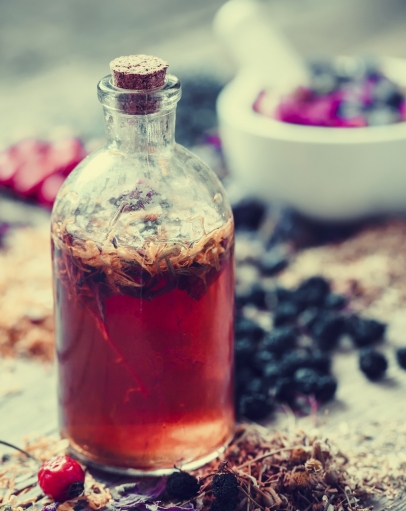Why so Bitter?
“What the heck are bitters?” As a bartender, I get this question a lot. The way I sum it up is this: Bitters are simply a concentrated flavor or a combination of concentrated flavors.
Traditionally, all sorts of things have been used to make bitters; roots, bark, spices, seeds, fruit, plants, flowers - the list is long. Bitters usually have a pretty high alcohol content, as most are made using a high proof grain spirit. Although they are potent, bitters are used sparingly - just a few dashes per drink.
When it comes to revealing ingredients, some companies are pretty open about their recipes. On the other hand, some companies have been operating for hundreds of years with only essential people knowing the details behind the highly coveted flavor combinations. Angostura is arguably the most well-known bitter on the market and a true staple behind any cocktail bar. It’s been in production since 1824 (and the ingredients have always remained a well-guarded secret).
The mention of bitters usually brings to mind a little brown bottle with a white paper label and yellow cap. It’s a great time for craft bitter makers these days - there are tons of new companies out there making some really cool bitters.
You usually only need a few dashes added to your favorite cocktail to give it that aromatic boost or to add just the right flavor, so it’s easy to keep a variety on hand. I like to mix it up and play with my large collection of quality bitters for fun adventures with whiskey.
The cocktail that most people know that uses bitters is one of my personal favorites - the Manhattan
Bitters can also serve a whole different purpose. It is pretty common for a savvy bartender to pass you an Angostura bitters and soda water if there is a complaint of an upset tummy. Bitters, depending on what they are made from, can act as a digestif. Angostura bitters fit the bill due to its unique blend of botanicals. .
Now, let’s get to the question I know you are dying to ask: “How do I make my own?”
Well readers, it’s pretty easy, although you will need to be patient. Here’s my general guide to making a basic bitter blend.
Find yerself a high proof but essentially flavorless grain alcohol like Everclear. A high proof vodka or gin will work too, but remember that whatever you use will impact the flavor of your final product.
Make a decision about the flavor profile you would like. That is sometimes the hardest part!
Start by choosing a “bittering agent” and a “flavoring agent”. Some local examples of bittering agents are dandelion (roots, leaves) and Devil’s Club roots. Yes, those terrible plants can serve all sorts of helpful purposes—not just ruin your hiking trip or infiltrate your garden.
Examples of unique flavoring agents include rose hips, wild berries, spruce tips, crab apples, mint - so many things that grow locally! Try spices like cinnamon or cloves, or add a bit of heat with fresh ginger. Let your imagination guide you on your next Farmers’ Market trip or foraging adventure.
When you’re ready, add your bittering and flavoring ingredients to the grain alcohol - feel free to experiment with amounts - just be sure all your ingredients are completely covered by the alcohol. Small mason jars with tight fitting lids work well. Leave the mixture to infuse for a few days or up to a week (shake daily). Strain and taste you mixture when you are ready. Try a few drops in sparking water to get the effect. If you think it needs more time just add fresh ingredients, tasting and repeating this process until you reach the desired outcome.
Start with small batches (4 to 6 oz.) and keep really detailed notes. That way you can look back and reproduce a batch if you love it, or see where you may have gone wrong. Have fun!
Here is a twist on one of my favorite cocktails, the Vesper, featuring rose hip bitters
.5 fl oz Icy Straight vodka
1 fl oz 50 Fathoms gin (both of those are from Port Chilkoot Disitllery in Haines)
.5 fl oz Lillet Blanc
3 - 4 dashes rose hip bitters
Stir in a mixing glass with ice cubes then strain into a cocktail glass. Before serving, twist a slice of orange peel over the glass to extract the flavorful oils.




